
Discover more at Sheffield Park and Garden
Find out when Sheffield Park and Garden is open, how to get here, the things to see and do and more.
Acres of Grade I listed landscaped garden and lakes, surrounded by historic parkland and woodland
Sheffield Park, Uckfield, East Sussex, TN22 3QX
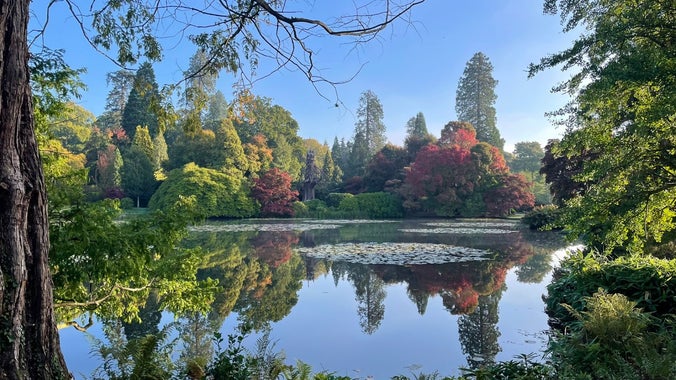
| Asset | Opening time |
|---|---|
| Garden | 09:00 - 16:00 |
| Parkland | Dawn - Dusk |
| Sheffield Wood | 09:00 - 16:00 |
| Coach House Café | 09:00 - 16:00 |
| Shop & Plant Sales Area | 09:00 - 16:00 |
| Secondhand Bookshop | 09:00 - 16:00 |
Please note that last admission into the garden is 30 minutes before closing time.
| Ticket type | With Gift Aid | Without Gift Aid |
|---|---|---|
| Adult (18+) | £19.80 | £18.00 |
| Child (5-17) under 5s free | £9.90 | £9.00 |
| Family (2 Adults and up to 3 children) | £49.50 | £45.00 |
| 1 adult, 2 children | £29.70 | £27.00 |
| Group (Adult 18+) | £17.10 | |
| Group (Child 5-17) | £8.55 |
The second hand bookshop is located in the Coach House café and is open during the same hours. All the money raised goes directly to help us care for Sheffield Park and Garden. Book donations are also gratefully accepted.
The Coach House café serves cakes, bakes, sandwiches, soup and hot meals, with indoor and outdoor seating available.
Free parking. If you are bringing a coach, please call in advance on 01825 790231. We have limited space for campervans. Please head to the main carpark. Motorcycle parking is situated opposite reception under the pines.
Facilities to lock up your bike can be found under the pines near the motorcycle parking. Additional bike parking is available outside the Coach House Café, opposite the willow horses.
Dogs are permitted on a short, fixed lead in the gardens except on Saturday mornings before 1pm. Dogs are allowed on a lead on the parkland at all times and in East Park off-lead. Dogs are also welcome in the Garden Room of the café. Assistance dogs are welcome across the whole site at all times.
Delve deeper into Sheffield Park’s history and horticulture on a free Garden Tour. Join one of our volunteer guides as they bring the gardens to life. Times and days are subject to volunteer availability so please do check before travelling.
If you're wandering in the garden, why not visit The Shant for a warming drink and a selection of snacks. Opening hours may vary, please check with the reception team on arrival.
Blue Badge parking. Accessible toilets. Loose gravel paths. Accessible pathways suitable for wheelchairs and site mobility scooter (bookable by phone). Dogs welcome on short leads (except Saturday mornings). Assistance dogs are welcome across the whole site at all times.
Accessible toilets adjacent to reception and in the café.
Braille guide available.
Mobility parking in main car park, 50 yards from reception.
Please see our full access statement for details.
A large part of the garden is accessible, there are some slopes and paths made of a non-gravel surface. The parkland and cricket pitch are rough terrain without level access.
Call 01825 790231 to reserve a mobility vehicle. We recommend you book well in advance to avoid disappointment, especially at busy times such as autumn.
Please ask at reception on arrival.
29 November – 11 January: Visit Sheffield Park and Garden this Christmas for a magical The Elf on the Shelf® Christmas trail! Discover twelve beautifully hand-painted elf sculptures around the garden as you take in the glorious wintry scenes and delight in festive games and activities for all the family. No booking required. The trail is free with normal garden admission.

Find out all about the upcoming special events at Sheffield Park and Garden. We have a fantastic range of events running all year round, whether you're looking for an interactive trail for children, a walk and talk with our Gardeners and Rangers, stargazing, craft clubs and photography workshops, there is something for everyone.
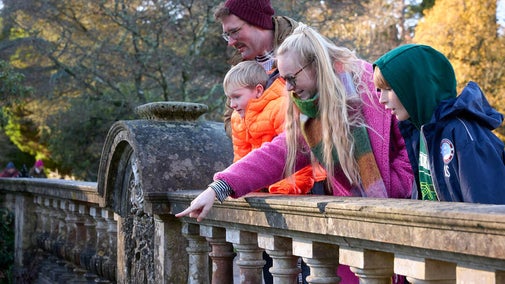
Sheffield Park is a two pawprint rated place. We love dogs at Sheffield Park, find out more about where and when you can walk on and off the lead and our dog-friendly facilities.

Come for the group’s interest in horticulture, history, or the simple pleasure of exploring a garden with friends, all followed with lunch or tea and cake. We also offer joint group bookings with the Bluebell Railway, which is just over the road, for a fantastic full day out.

Here you will find the latest updates and musings from the garden team at Sheffield Park and Garden.

Take a look at the map of Sheffield Park and Garden to help plan your visit.
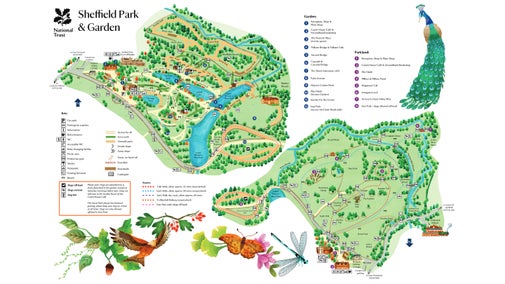
A horticultural work of art, formed through centuries of landscape design, with influences of ‘Capability’ Brown and Humphry Repton.
Iconic bridges and the Pullham Falls cascade link five mirror-like lakes creating dramatic reflections of shape, texture and colour.
More than 300 acres of Sussex countryside of natural and historic importance, in the wider Sheffield Park estate.
Coach House café: cakes, sandwiches, hot lunches and ice cream. Indoor and outdoor seating. The Shant: takeaway refreshments by the lake.
Shop by Visitor Reception filled with gifts, accessories and local produce, specialist plant sales area. Second-hand bookshop adjacent to café.
Secluded woodland walk steeped in history, with natural art sculptures and an abundance of wildlife.
Recently restored riverside wildlife haven, home to a diverse range of species including kingfishers, birds of prey, butterflies and dragonflies.
Explore a horticultural work of art at Sheffield Park in East Sussex, formed through centuries of landscape design, famed for its autumn colour but beautiful in every season.
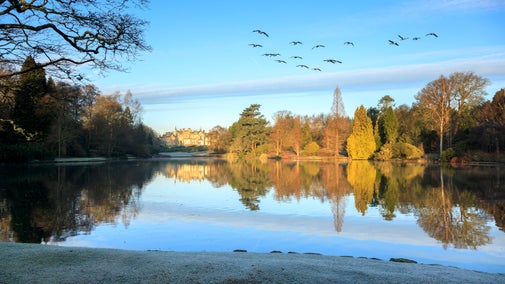
Explore over 250 acres of wide-open spaces and dramatic skies at Sheffield Park and Garden. Look out for butterflies, buzzards or skylarks and the historic remains of its past.

Whether you are visiting with friends or family, there are plenty of new things to discover and fun ways to get active in nature at Sheffield Park and Garden.
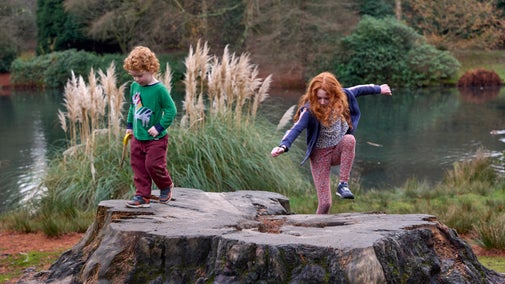
Here you will find the latest updates and musings from the garden team.

Sheffield Park is a two pawprint rated place. We love dogs at Sheffield Park, find out more about where and when you can walk on and off the lead and our dog-friendly facilities.

Sat 29 Nov - Sun 11 Jan Visit Sheffield Park and Garden this Christmas for The Elf on the Shelf® Christmas trail! Discover twelve hand-painted sculptures around the garden as you take in the glorious wintry scenes and delight in festive games and activities for all the family.

Join us for a Christmas Carol Concert at Sheffield Park and Garden on Sat 13 and Sun 14 of December, from 6pm till 8.30pm. Enjoy carols by the light of the Christmas tree in Oak Hall, performed by the Sussex Chorus. A mince pie, mulled wine or spiced apple juice is included with your ticket. Booking essential.
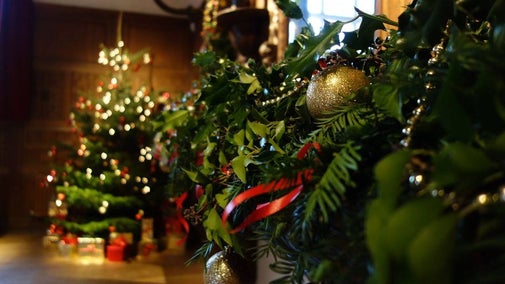
Join on a guided tour of the garden on Thu 8 Jan 2026 and learn about winter's seasonal highlights. Explore trees with beautiful bark, our diverse conifer collection and stop to enjoy the deep reflections in our mirror lakes. We will also share what the team are up to in the garden, and tips and inspiration for making your garden at home look beautiful in the winter months.
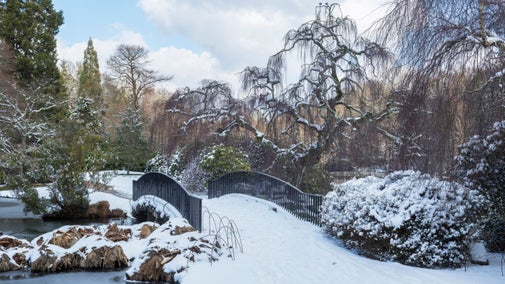
Browse in the shop and Plant Shop, or stop by one of the indoor and takeaway eateries for a well-deserved rest, when you visit Sheffield Park and Garden.
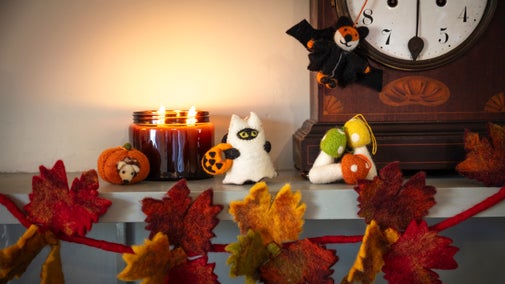
Key spots and points of interest at Sheffield Park, including walking trails and where you can take dogs.
Explore the wider Sheffield Park estate and discover the historic and natural importance of this piece of Sussex countryside.


Nestled on the vast Sheffield Park estate in the glorious Sussex countryside, this gardener’s cottage puts you at the heart of the historic parkland.

A one-bedroom apartment in trademark Arts and Crafts style, on the second floor of Standen House.
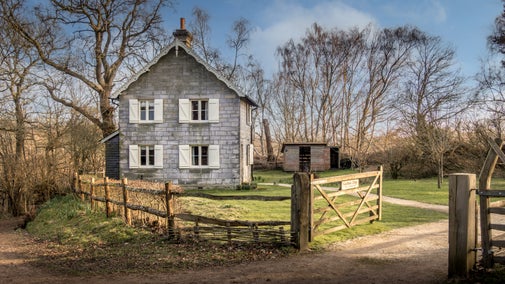
This gamekeeper’s cottage is surrounded by woodland on the Nymans estate.
If you’re planning a visit with your dog or dogs, why not pick up a Pooch Passport on your next walk?
The Elf on the Shelf® is coming to Sheffield Park and Garden for the first time this Christmas.
Join on a guided tour of the garden during the depths of frosty winter.
Join Ranger Matt as he talks about the wetland habitat here at Sheffield Park and Garden.
Join professional forager Megan Howlett on a winter exploration through the gardens, learning more about the seasonal delights on offer.
Join the garden team on this guided walk of the fascinating winter bark and buds found throughout the garden.
The Grade I listed garden is a horticultural work of art formed through centuries of landscape design, with influences of 'Capability' Brown and Humphry Repton. Four lakes form the heart of the garden, with paths circulating through the glades and wooded areas surrounding them. Each owner has left their impression, which can still be seen today in the layout of the lakes, the construction of Pulham Falls, the planting of Palm Walk and the many different tree and shrub species from around the world.
Our historic parkland forms a larger footprint for the Sheffield Park estate. Dating back several centuries, it has had many uses including a deer park and WWII camp, and is now grazed with livestock and home to our natural woodland play trail in Ringwood Toll. The River Ouse runs across the bottom of the parkland and the original meanders are still visible winding across the meadow. This area has been transformed into a wildlife haven and is home to a diverse range of species including kingfishers, birds of prey, butterflies, and dragonflies.
Discover more about the makings of Sheffield Park and Garden in East Sussex, from Capability Brown’s foundations to Arthur Soames’s horticultural legacy.

We are working with two-time RHS Chelsea Flower Show medal winner Joe Perkins to create an exciting new garden within a garden. Work begins towards the end of January 2024. The new space will transform a peripheral corner, once used for experimental beds and propagation, into a remarkable planted oasis.

Find out how the National Lottery Heritage Fund has helped transform the River Ouse at Sheffield Park as part of a major river restoration project.

Volunteers are a vital part of our team. See how you could get involved with the work we do here, and join us.


Find out when Sheffield Park and Garden is open, how to get here, the things to see and do and more.
By sharing your email address you’re agreeing to receive marketing emails from the National Trust and confirm you’re 18 years old or over. Please see our for more information on how we look after your personal data.